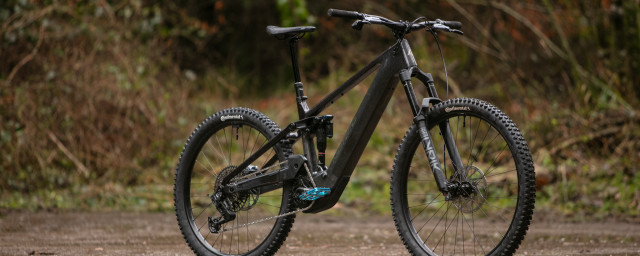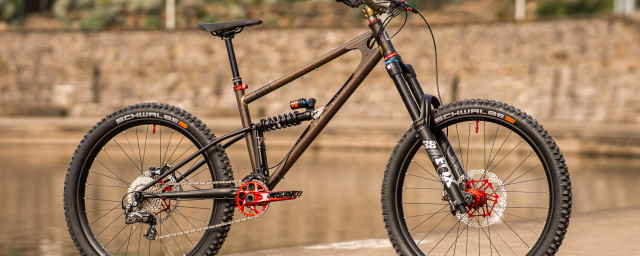Scott reveals all-new Voltage eRIDE

It’s been a busy winter at Scott headquarters in Givisiez, as the Swiss brand launches its second new mountain bike model in less than a month.
- Opinion: A lightweight e-bike is in your future so you might as well get used to the idea now
- How 26" wheels are still turning out the fun
- Behind the scenes with Team GBR's mechanics
Like all other current Scott dual-suspension bikes (but for the brand’s Gambler downhill frame), the Voltage features an integrated shock configuration hidden in the seat tube cavity. This design prevents environmental contaminants like mud or dust from wearing shock seals and protects the shock stanchion from any terrain strike damage.
Scott’s relationship with Fox for the supply of custom Nude shocks for its TwinLoc suspension control system continues with the Voltage but with some notable upgrades. Hidden in the seat tube is an inverted Fox Nude 6T, with three compression settings, selectable by a handlebar remote: climb, traction and descend.
Where this latest version of TwinLoc adds a new trick, is its remote selectable ramp control. Legacy Ransom and Genius LT owners have a ramp-control dial on their Fox shocks, but that function is now controllable on the fly, with the Fox Float-X Nude fitted to Scott’s Voltage eRIDE Tuned’s TwinLoc remote.
The Voltage’s carbon frame uses all of Scott’s engineering knowledge regarding composites to create a frame with varying stiffness and strength profiles. The top and upper seat tubes feature a ‘lighter’ carbon-fibre structure, with the bottom bracket area and lower down tube, constructed with more material reinforcement. This means the Voltage is stiffer and more impact-resistant where it needs to be and lighter with greater comfort and compliance where riders need those characteristics.
Frame geometry is true to the Voltage’s purpose as a trail bike capable of venturing into steeper and more technical terrain. The 160mm fork and 155mm shock set Scott’s newest eRIDE model at a 63.9-degree head angle, with a reference reach number on the size large being 485mm. Adjustments cups ship with the Voltage, allowing riders to steepen the head angle to 65-degrees, if they wish.
Despite the seat tube accommodating that internal suspension system, Scott’s engineers have created enough clearance for long dropper posts. The size small ships with a 140m dropper, sizes medium and large up to 180mm, with the extra-large Voltage featuring a 210mm dropper post.
But what about the Voltage’s mid-drive motor? Scott’s engineers use the TQ-HPR50, rated at 50Nm, which draws energy from a 360Wh downtube-mounted battery pack. If you plan on doing multiple runs of your favourite trail, or a big day out in the mountains, there is a range-extender battery, which slots into the Voltage’s seat tube bottle cage, adding 160Wh of energy.
Telematics integration is provided by a minimalist top tube display that is easily customizable to rider preference. Riders who need to adapt the TQ-HPR50 motor’s pedal-assistance mode and power delivery can do that via an app on their Smartphone. And if your riding ambitions exceed the Voltage’s range, and it happens to even the most attentive mountain bikers, the TQ-HPR50 motor disengages to create no pedal drag (says the brand) on that ride back home, or to the trailhead.
DIY mechanics will appreciate a further development of Scott’s rear axle tool, with expanded functionality that now includes T25/30 bits and a size 6 Allen key. That means Voltage riders have all the necessary bits to adjust pivot hardware and several other components. Handy if you accidentally forget your multitool in the car or at home.















